This chapter aims to identify ways of reworking entire aspects of the mobility system. This concerns vehicle equipment, operational management and the relations with users as well as the organisation of synergies with other modes of transport. The challenge is to offer a superior mobility service at a lower cost.
The emergence of digital technology does indeed create new opportunities. It makes it possible to envisage technological breakthroughs (“leap frog“) for the African continent without having to go through all the stages of development experienced by Western countries. Africa has not experienced certain industrial revolutions and therefore does not have to grapple with any “technological baggage”. With regard to frugal innovation, it can use the latest technologies and invent its own model that is tailored to its specific context. For example, phones – and mobile internet in the near future – have become a daily reality for the people of Africa. Currently, more Africans have access to a mobile phone than to drinking water or electricity.
However, it is important to note that, while these opportunities are of significant interest and potential in terms of efficiency, they are not inevitable and should not take absolute priority, leading to the risk of reducing the scope for investment in the vehicle fleet.
They must be designed according to the strengths as well as their weaknesses with regard to the local context.
The paradigm shifts brought about by digital technology are:
- dynamic information available everywhere and at all times without the limitations posed by physical media[1];
- smartphone: a computer that is connected in real time for a minimal investment[2];
- the infinite computing power for statistical models uploaded with data generated in bulk;
- the emergence of connected objects.
[1] 99% of the world’s surface area is covered by mobile telephony
[2] A standard smartphone today is a more powerful computer than the one on board the Apollo spacecraft that went to the moon.
Thanks to digital technology, significant breakthroughs and gains in efficiency can be achieved at a lower cost in the areas of mobile payment and ticketing, Systèmes d’Aide à l’Exploitation et à l’Information Voyageurs (operating assistance systems and passenger information), dynamic management of operation and even preventive maintenance. Given these possibilities, which are even more numerous in the African context, it would seem that a discussion must be engaged on how to develop a digital component to support the bus fleet acquisition or renewal projects.
Mobile payment and ticketing
Mobile payments have profoundly changed the way ticketing is managed. This is progressing rapidly while disparities still exist from one country to another. In Kenya, for example, the mobile payment penetration rate is 85%. This leads to considerable savings and renewed flexibility.
The end of ticketing systems and the digitalisation of distributions
In the short term, smartphones will all be equipped with contactless technology (NFC[1] or equivalent) which will allow payments to be made using a mobile phone. It can also lead to savings in on-board equipment which can also simply be smartphones connected to the server via the mobile internet network.
The entire payment system for transport tickets is accessible everywhere in a digitised form. This leads to considerable savings because the bus stops and retailers no longer have to be equipped with ticketing equipment or systems for managing change.
[1] Near Field Communication, an emerging standard for contactless communications.
Flexibility and fare integration
Another benefit of mobile payments will be that the fare can be dynamically adjusted according to the distance covered and timetables, and progressive price increases no longer have to take into account coins or banknotes. This also makes it easy to consider combined pricing between the formal or paratransit networks with automated revenue distribution mechanisms between the operators and the authorities.
Reliability and security of financial flows
It is also a means of safeguarding financial flows and avoiding online losses in particular, which is a problem associated with the circulation of cash.
Amarante – Franco-Senegalese ticketing start-up
In Dakar, Amarante offers a smartphone ticketing app and Bluetooth printers on board buses. The ticket is generated and printed by the conductor each time a passenger boards the bus. 426 vehicles are fitted with this equipment. This has generated a 40% increase in revenue for the owners using the system (less “evaporation”).
Source – Analysis of the economic model of the semi-formal independent transport system in Dakar using data from the iTicket ticketing solution (Amarante) – Amarante and Transitec – 2017 ITS show
Monitoring of occupancy, “big data” and forecasts
By implementing mobile payment solutions, occupancy can be monitored precisely, including validations, and starting points/destinations in the event of exit validations. Thanks to this vast amount of data, it will be possible to manage the transport offer with a high degree of detail and adapt to travel needs in real time, or almost, using short-term probabilistic statistical models. The promise is to be able to do without complex and expensive occupancy surveys. It is also a paradigm shift in terms of methodology because we are moving from an approach, where samples are surveyed and then adjusted to reflect the reality, to an approach where we have access to comprehensive data (“big data”) that are directly integrated into the mathematical models of traffic forecasts. The forecasts will be much more precise and will be used to adjust the supply to the demand in real time, or almost.
Système d’Aide à l’Exploitation et Information Voyageurs (operation assistance and traveller information system)
Système d’Aide à l’Exploitation (operations assistance system):
Conventional bus networks in Europe have developed specific telecommunication systems between the command post and the buses (Tetra technology). As a result on-board transmitter receivers are installed on the buses, and antennas are fitted as well as centralised command post equipment. As part of the modernisation or the creation of a new bus network, there is the option to simply equip drivers with a smartphone to geolocate the bus and send information in real time to the command post. Monitoring is done in real time using an “Uber-type” interface (location and real-time graphic representation of vehicles). Naturally, it is also a simple means of communication between the driver and the command post or with traffic officers, to facilitate a faster response in the event of an operational incident, road accident or traffic disruption situation that is affecting bus operations.

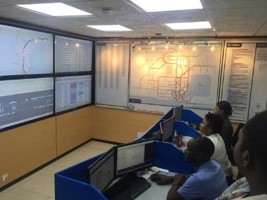
PYSAE – French start-up that offers low-cost SAEIV solutions using smartphones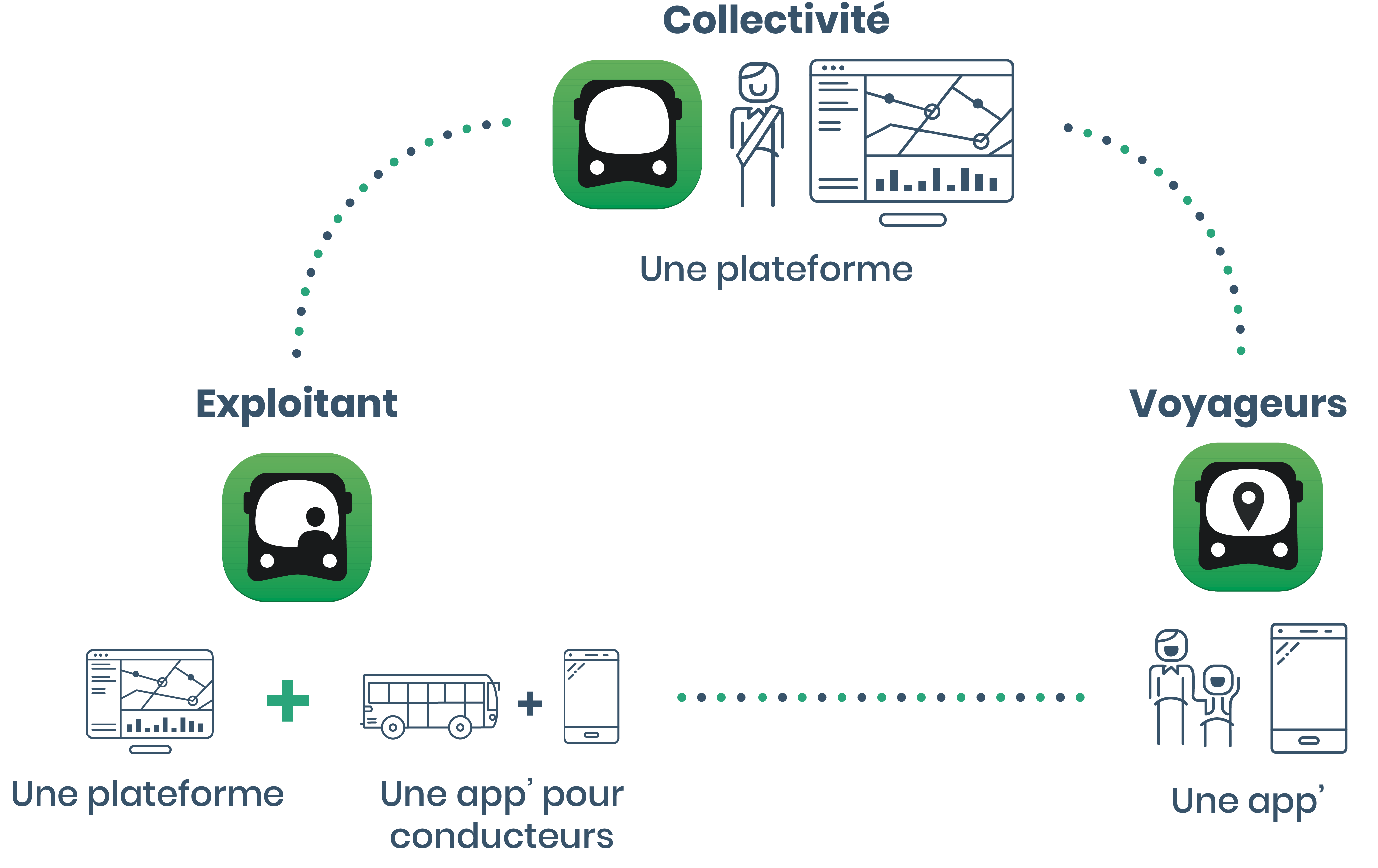
The Pysae Solution
Source and image credit : Pysae
Information in real time:
From a traveller information point of view, smartphones can be used to receive information in real time, which means that bus stops don’t have to be equipped with dynamic information panels or even timetables since the information is directly accessible on mobile devices. This can save money but also make operations more flexible because it is no longer limited by the physical medium.
Accessibility and personalisation of passenger information:
It also provides solution to problems associated with language, illiteracy and accessibility for people with visual or cognitive disabilities because the app can become a personal assistant that adapts to everyone’s needs.
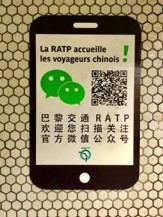
Intermodality and network integration:
The free-flowing exchanges of data between operators and flexible payment solutions greatly improve the integration of the networks which are better planned, with passenger information which is open. By producing open data, third-parties can offer services that aggregate and enhance this data, e.g. route calculators, which can be accessed through the internet or mobile devices.
Through the generation of data in bulk, the mobility authorities will better understand the different networks and give them better arguments for improving regulation.

Dynamic management: optimising operations and adapting to demand:
This is still a poorly understood area in Western countries. One of the promises of digital technology is to be able to optimise the running of the network in real time according to demand data and traffic conditions in particular. The service’s ability to adapt will have to take into consideration staff management and maintenance limitations. Consequently, a dynamic management system could look like the following for example:
A reassignment of the fleet on the different routes according to the hours of the day and the days of the week or year in order to adapt the supply to the demand in real time (market days, events, school holidays, etc.).
Adapting the itineraries to demand, especially during off-peak hours.
Physical and pricing integration of the different networks and optimisation of synergies between different networks.
The software capabilities will provide aids to decision-making for dynamic and optimised scheduling.
Moving towards mobility “as a service”
The purpose of the bus networks is to fit into a broader vision of the mobility system. The emergence of so-called “new mobilities” such as carpooling or on-demand transport is leading to the development of a range of mobility solutions between public transport and individual transport. As a result, the future of the organisation of mobility is the concept of “mobility as a service”. The approach is based on the request to go from point A to point B with algorithms that direct you towards a range of mobility solutions tailored to each trip. In terms of planning, the production of bulk data on supply and demand will feed into ever more detailed probabilistic statistical models that will optimise the running of networks and dead mileage traffic in particular and, by extension, running costs while enhancing the quality of service. From a traveller’s point of view, digital technology will open up ways of dealing with a variety of demand profiles as opposed to the traditional response of public transport to bulk flows.
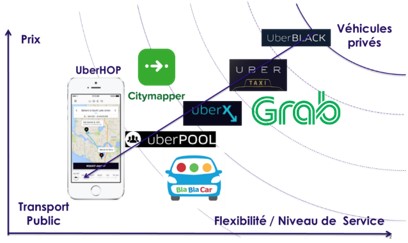
Preventive maintenance:
This is still a relatively poorly understood area. The emergence of connected objects and the Internet of Things should make it possible to monitor the various components of the bus and again provide information for statistical models that will anticipate issues through preventive and curative maintenance that match needs as closely as possible (instead of scheduled maintenance). The promise is therefore to significantly improve the reliability and management of spare parts needs or optimised maintenance tasks. With the accumulation of data, it will also become possible in the long term to consider improving the design of buses to adapt them to the African context.
New services and revenue streams:
Thanks to digital technology, new services on board buses can be offered, e.g. free WI-FI. It is an enhancement of the passenger experience. Indirectly, through the generation of bulk data on operations, demand and passengers using WI-FI in buses, new services may be envisaged and new sources of revenue may be found through the use of these data. It is a sensitive issue from the point of view of personal data protection, but the data, including personal data, can be enhanced in particular with third parties for advertising purposes or with establishments open to the public for forecasting footfall. Thanks to the current dynamism of African or non-African start-ups, new uses can be foreseen which do not currently exist but which could emerge if the context is sufficiently open.
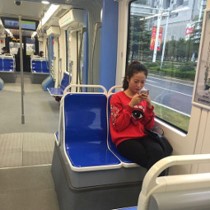
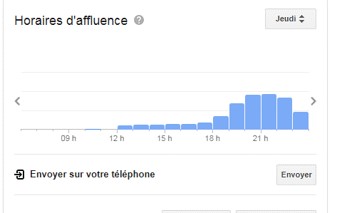
To recap…
Thanks to digital technology, significant breakthroughs and gains in efficiency can be achieved at a lower cost in the areas of mobile payment and ticketing, Systèmes d’Aide à l’Exploitation et à l’Information Voyageurs (operating assistance systems and passenger information), dynamic management of operation and even preventive demand. Given these possibilities, which are even more numerous in the African context, it would seem that a discussion must be undertaken to develop a digital component to support the bus fleet acquisition or renewal projects.
With the help of digital technology, significant improvements in the quality of service to the public are achievable at a much lower cost than conventional systems. The hallmark of digital technology is the ability to deal with vast numbers, which will stimulate an integrated approach to networks that is personalised for each “mobility as a service” traveller.
- 99% du territoire mondial est couvert par la téléphonie mobile.
- Un smartphone standard est aujourd’hui un ordinateur plus puissant que celui qui était embarqué dans la navette Apollo qui est allé sur la Lune.
- Near Field Communication, standard en train de s’imposer pour les communications sans contacts.